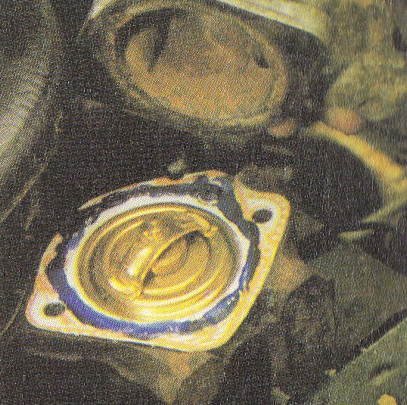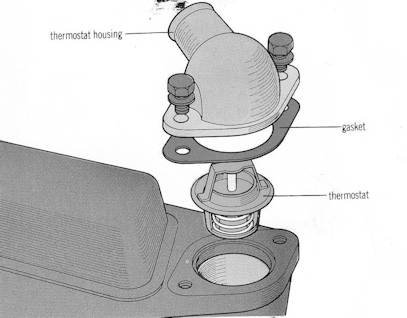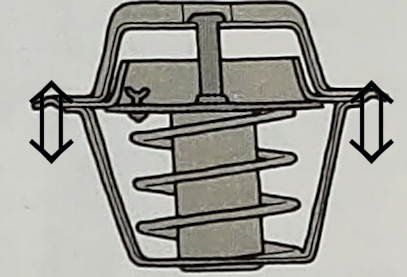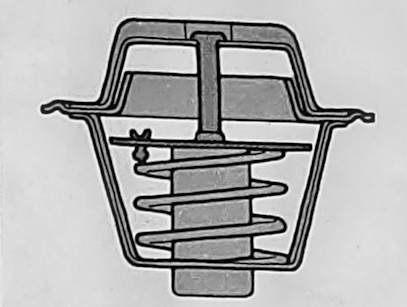Cooling System Removing and testing a thermostat

Thermostats are quite reliable, they do occasionally go wrong and need to be renewed. There is nothing you can do to repair a thermostat but new units are quite cheap.
This article covers replacing and testing thermostats in water-cooled engines, which are found in the vast majority of cars.
Guide
On most cars the thermostat is located on the top of the engine at one end and can usually be found by following the top radiator hose back to the engine.The thermostat (usually in a cast metal or alloy housing on to which the top hose fits) is a valve which allows the cooling system to reach its working temperature before it opens to bring the radiator into operation.

There are two types of thermostat: one that shuts the valve when it fails, causing overheating; the other that opens the valve when it fails, causing the engine and heater to run cool.
A suspect thermostat of either type can be roughly checked by running the engine until the top hose heats up suddenly—this shows that the valve has opened. If the hose heats gradually, the valve may be failing and should be replaced. A more accurate check can be made by removing the thermostat from its housing.
What this job involves:
Removing radiator hoses
Removing thermostat
Testing thermostat
Replacing /renewing thermostat
Tools:
Spanner to fit housing bolts; water tight container; long-nosed pliers srewdriver; thermometer.
Materials: Thermostat-housing gasket; high- melting-point grease; emery cloth.
Drain about 3 pints of coolant from the radiator. If the job is done in winter, drain the coolant into a container so that it can be re-used ir replaced for refilling the radiator. Undo the thermostat housing bolts can be held to the engine by two, three or four nuts or bolts. and lift off the cover. With cast-aluminium engines take care not to prise the cover free and damage surface.
Peel off the old gasket and any sealing compound which may have been used, and lift out the thermostat. Clean the thermostat housing and the cylinder head with fine emery cloth.

Inspect the thermostat valve, which should be shut tight. If it is not, discard and replace the thermostat.
If it is shut, look for a stamp mark on the thermostat valve which will indicate the temperature at which the valve should open to bring the radiator into the system.
Heat a sutable container of water on the to within 11°C (20°F) of the marked temperature. Stir the water as it heats, to ensure that the temperature is uniform around the unit.
Hold the thermostat in the water with a pair of long-nosed pliers.

The increase the heat, and the valve should begin to open within 3°C (5°F) of the marked temperature. It should be fully open when it reaches the temperature specified. If the thermostat fails this test, discard it. If it passes the test, refit the unit. Always use a new housing gasket, and smear it liberally with high-melting-point grease.
